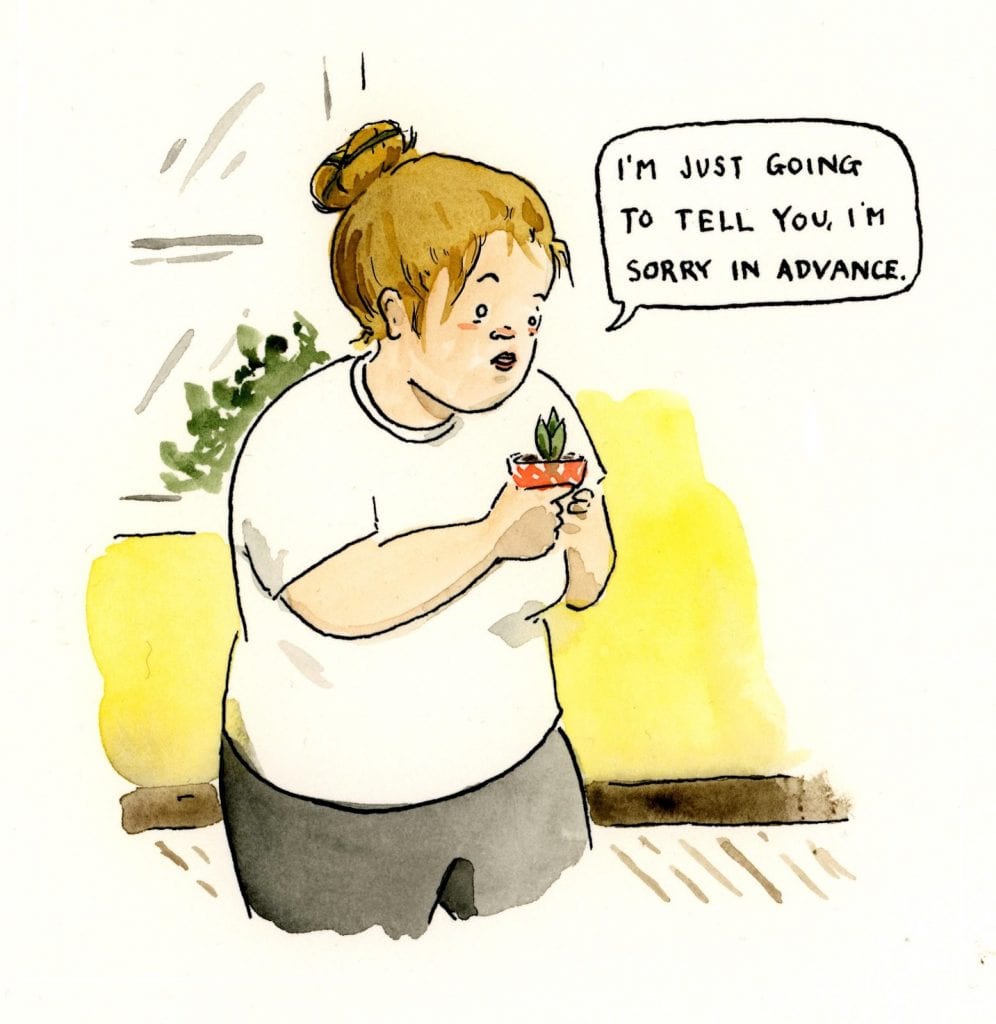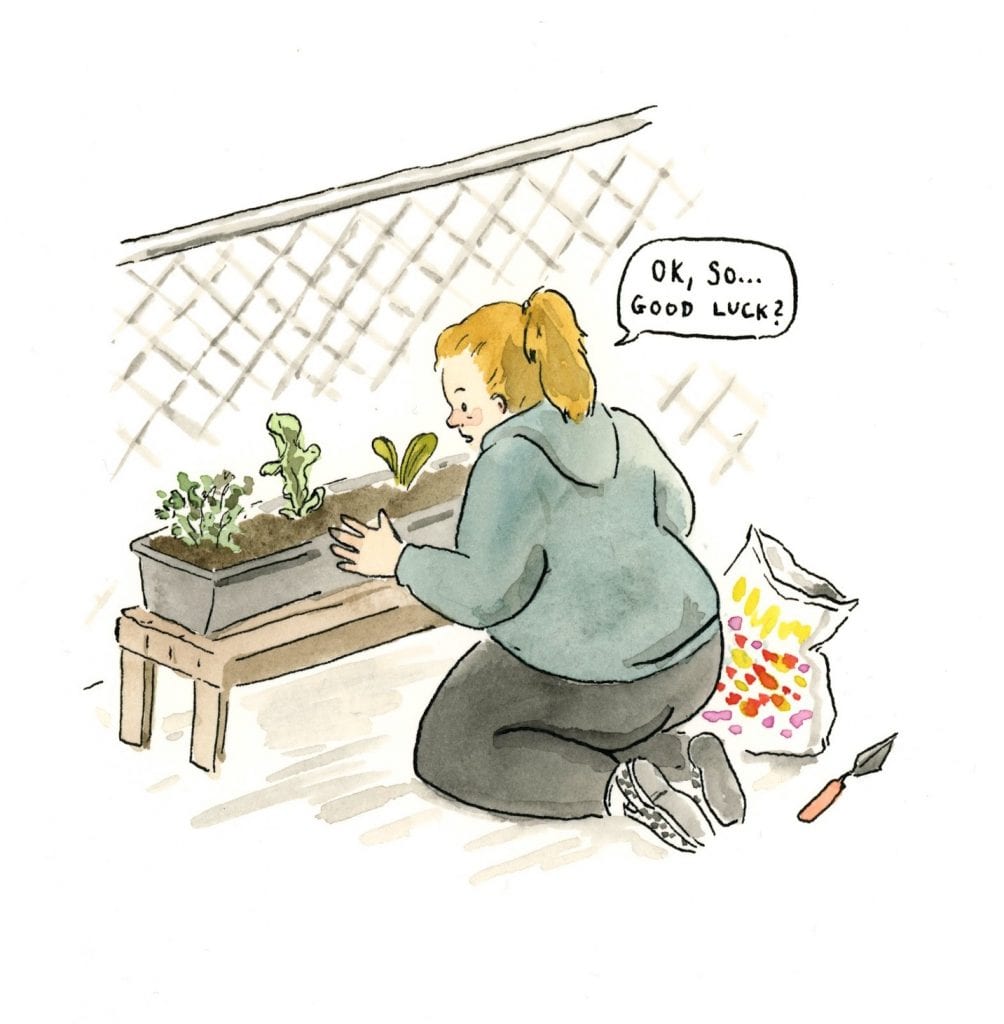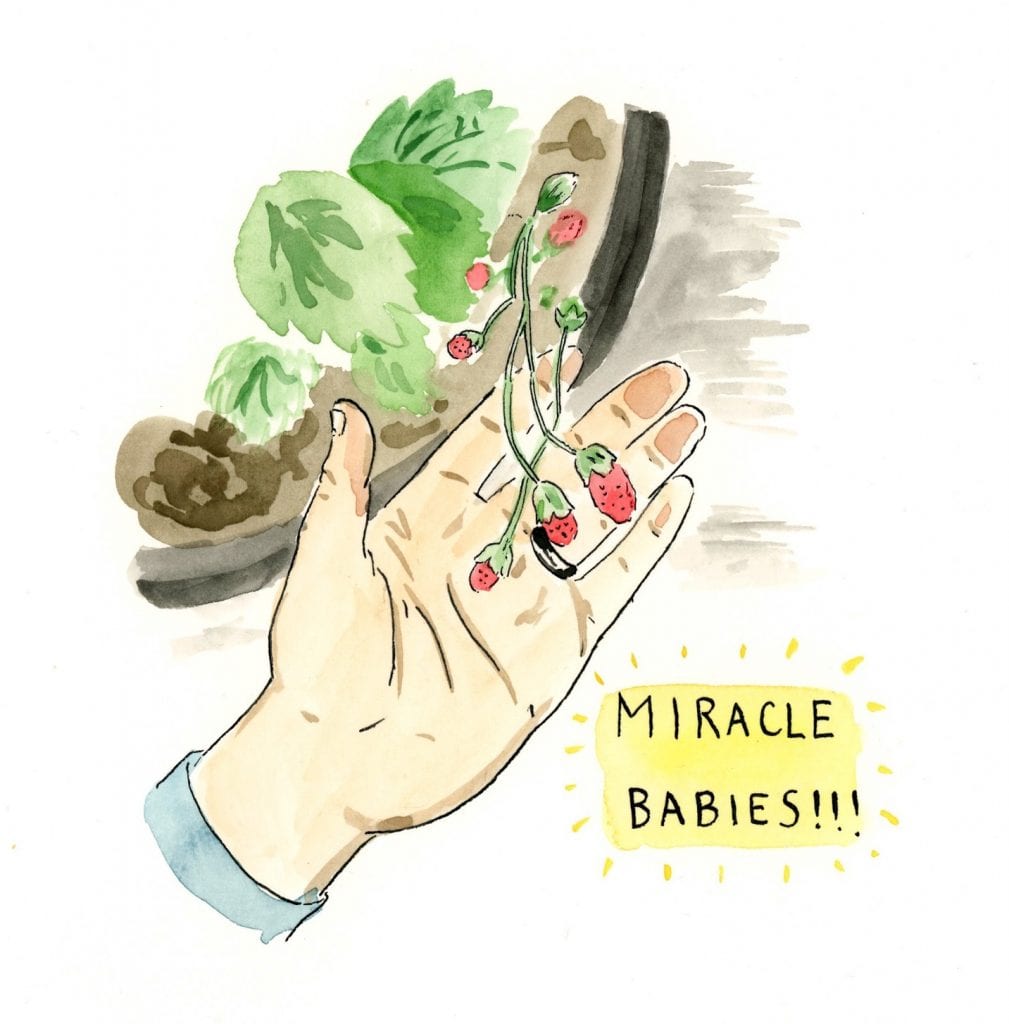“It’s impossible to kill,” my friend said cheerfully, handing me a tiny succulent. “Sounds like a dare,” I muttered, accepting the plant, and my fate. My track record with plants of any kind has been what we could call spotty, or, less delicately, horticultural manslaughter.
I grew up in a family of plant-murderers. My mother’s one attempt at a garden — six sad marigolds planted in the wettest, shadiest spot of the yard, yielded nothing but mud and, to my delight, worms. An aloe plant gifted to me after I suffered a particularly bad sunburn in high school soon shriveled up into sticky blades. Every house plant my daughter has ever brought me for Mother’s Day has given up the ghost by Labor Day (what this says about my parenting, I don’t want to know).

But then, of course, 2020 happened. As things started to take a turn for the Very Weird, my inner apocalypse prepper awakened. To be clear, my inner prepper is laughably incompetent and in the event of a real apocalypse would be eaten almost immediately. (I’m very tender!) I indulged my urge to feather a bunker the way I take care of most things: panic-buying stuff on Amazon (a solar charger and a first-aid kit, both arguably things I should have already owned), baking (not bread, you basic bitches — I whipped up about a squadrillion cookies and devoured them one after another while glued to my phone), and starting a garden.
Here is another thing you need to know about me: I live in an apartment in Brooklyn. We do not have a yard. What we do have is a fenced-in concrete strip with a bunch of planters in it, remnants of a garden memorializing someone nobody in the neighborhood seems to remember. I stood in a socially-distanced line with all the other panic-gardeners in my neighborhood and bought a bag of soil, pink gardening gloves, and whatever plants seemed like a good idea — lettuces, herbs, strawberries. In a few months, I crowed silently to myself, I will have enough for half a salad! Take that, potential food-supply-chain disruption!

I went into this venture fully aware of what I am. To mitigate my own incompetence, I leaned hard on the Internet (“how… do… I… not… kill… plants”) and friends with greener thumbs. I sent a lot of texts that began with, “This is such a stupid question, but….” I downloaded no fewer than four plant-identification apps. I got the plant babies in the soil, I had my daughter name and label them, and I sat back and waited for them to die.
Then, miracle of miracles: they didn’t die. The mint exploded, flourishing into a Derby party’s worth of potential juleps. A health-conscious squirrel made off with one of the lettuces, but the others unfurled into lush, tender beauty. The real triumph was the strawberries. All three plants (“Nicole, Melissa, and Junior,” as per my daughter) burst into glorious flower, and the middle part became AN ACTUAL FRUIT THAT A HUMAN COULD EAT.
What sorcery! I felt like I had invented fire, when all I’d really done was put some dirt and a plant in a pot and left it alone. I didn’t just make half a salad. I made FOUR salads. I started following gardening accounts on social media, and noticed that my friends were starting to talk about their plants in a way that sounded explicitly parental. This would have made the old me roll my eyes, but the new me felt the initial stirrings of something like kinship.

It’s also worth noting that I live by the side of a highway exit on a block constantly choked with traffic. It’s possible those salads I made were more benzene than lettuce. But I can tell you this: I don’t care. They tasted like triumph.
Like pretty much every other human triumph, though, mine was short lived. The lettuce grew weirdly tall and sticky — my gardening friend told me that it had gone through puberty, which was an unfamiliar and completely gross concept. One of the mints took sick and perished, and I never got over the feeling that maybe the other one resented me for it. Eventually, it got cold, and the strawberry plants went to sleep. By now I had grown accustomed to the weirdness of 2020, and my apocalypse planning had evolved into having too many cans of beans and fantasizing about learning to use a hunting bow. I didn’t look up what to do with plants once it got cold, but I did bring the resentful mint inside, where it promptly died.
And maybe that’s the key to all of this — New York City exhaust-filled air notwithstanding, my plants thrived outside. Cooped up in an apartment, deprived of sunlight and the companionship of other plants, they died. I am more than aware that millions of people successfully care for indoor plants, but maybe I’m just a person whose plant babies need to be outside, among their friends. After nearly a year of being inside more than I’d like myself, I know how they feel.


